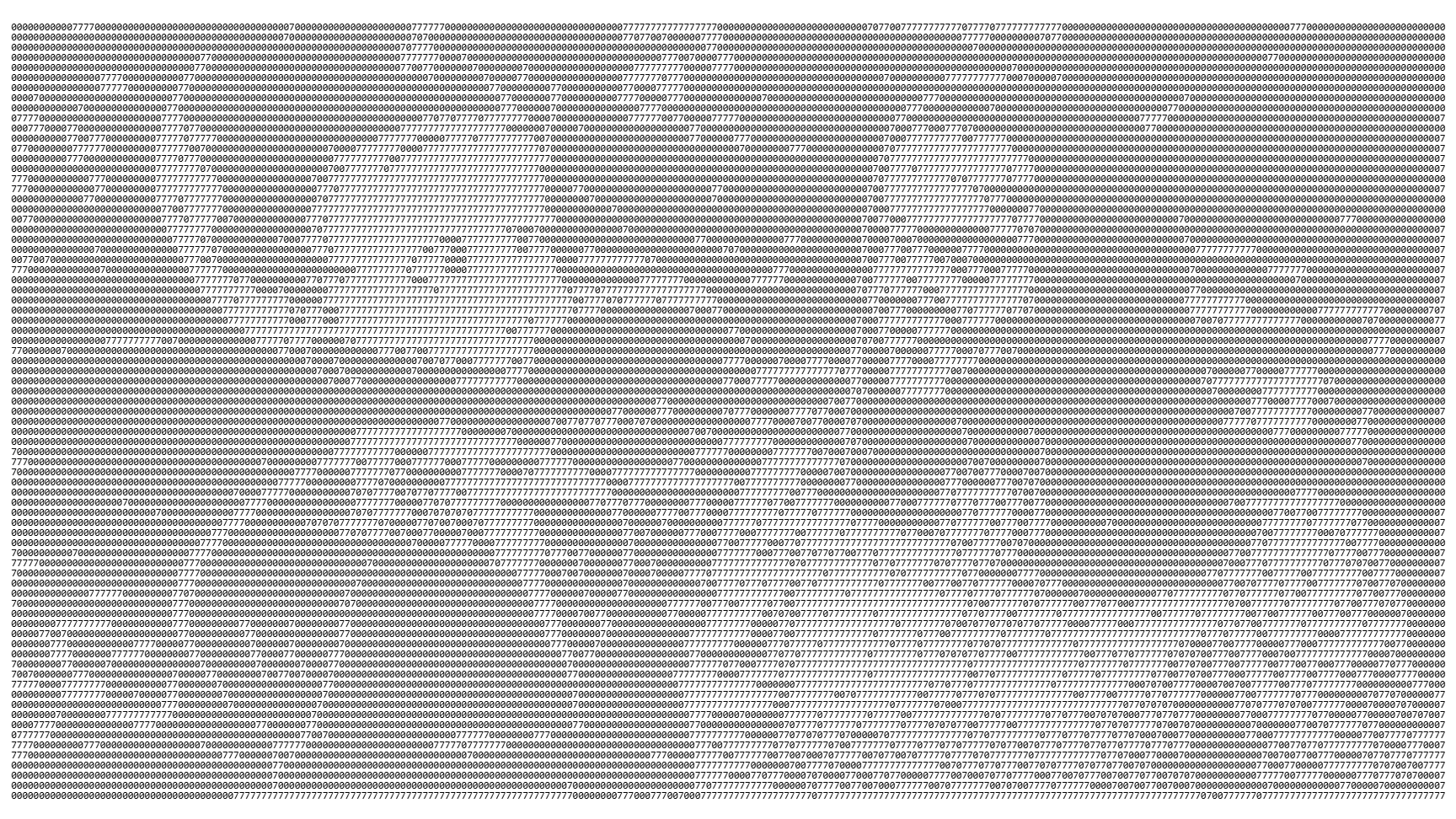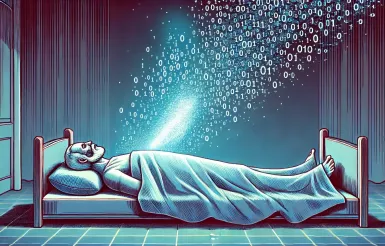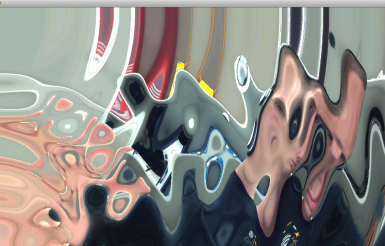Post-mortem data: is there a digital life after death?
Rédigé par Régis Chatellier
-
03 février 2025From the production of data throughout our lives to its use in a new "digital afterlife", digital practices around death have been constantly evolving since the advent of the consumer Internet. A whole ecosystem of practices, as much as a market, is being reconfigured by technological advances, with their share of legal and ethical issues.

Death, digital technology and data have gone hand in hand since the advent of the web in the 90s. The site Cemetery.org, which will celebrate its 30th anniversary in 2025 , is the first example of a digital cemetery, which since 1995 has made available profile pages of the deceased, photos, videos and comments left by the bereaved. Each new era of digital usage has given rise to a renewal of practices, from personal internet pages to web 2.0, social networks and now artificial intelligence technologies, chatbots and LLMs.
Practices and promises that merge with the belief in an eternal Internet. The Internet has long been presented as the world's library, the repository of shared, immutable and inexhaustible knowledge, associated with Big Data and, more recently, with large language models (LLMs) fed by multiple data sources.
On a personal level, digital technology is enabling the creation and reinvention of practices related to the death of loved ones, mourning and memory, as well as the anticipation of one's own death, thanks to dedicated services. The accumulation of data, generated in particular by the use of social networks, the storage of photos and data, the feeding of blogs, etc., can become a source of concern for those left behind, when they have to deal with services that outlive their owners. In this context, a whole ecosystem of digital practices, but also a market, has long since formed around digital death, with its share of legal issues.
Data protection, first and foremost a right of the living
Personal data, its processing, storage and transfer are never far away when it comes to digital death, or digital immortality, in a context where however, personal data protection law, and in particular the European General Data Protection Regulation (GDPR) applies to the living. Recital 27 of the GDPR states that it "does not apply to the personal data of deceased persons". However, the text provides that States " may provide for rules regarding the processing of personal data of deceased persons". As early as 2016, in France, a Law (Loi pour une République Numérique) amended the national data protection Law (Loi Informatique et Libertés) to include in its chapter V provisions designed to govern "the processing of personal data relating to deceased persons".
Article 85 of the French Data Protection law states that any person may define directives concerning the retention, deletion and communication of his or her personal data after his or her death. These directives may be general (see below), or specific, when they concern a data controller, and must then be registered directly with the data controller. They are subject to the specific consent of the data subject, and result from the acceptance of the general conditions of use of the service. Very early on, the major social networks put in place solutions to manage the pages of deceased persons. In 2009, for example, Facebook introduced a feature enabling the accounts of deceased people to be transformed into memorial pages. In 2015, it became possible to designate a legacy contact directly from the configuration page. Comparable features are available on other major networks such as Instagram, Linkedin, Twitter-X, or Google.
For all personal data, the French data protection law provides for general directives to be registered with a trusted digital third party certified by the CNIL, and entered in a single register, these provisions are not yet applicable, as the decrees relating to these articles have never been published. However, it is still possible for private individuals to register such instructions directly with a notary.
In the absence of directives, it is the heirs of the person concerned who can have access certain data, for example useful for the liquidation and division of an estate. They can also receive communications of digital assets "similar to family souvenirs, that can be transferred to heirs". Finally, they can "close the user accounts of the deceased, oppose the continuation of the processing of personal data concerning him or her, or have it updated." There are also information management and "funeral provident" services, which offer, for example, to manage the closure of accounts on behalf of relatives.
For their part, service providers, such as social networking platforms, must inform their users of the fate of their personal data after their death. They must also allow users to choose whether or not to share their data with third parties.
Practices and market of digital death
The legal framework described above focuses on the transmission, access and management of the data and accounts of deceased people, but digital technology has given rise to a wide range of practices that go beyond these issues.
These can take many forms, depending on the people who implement them, and the objectives the pursue. Indeed, since the democratisation of Internet access, we've seen the creation of new forms and digital rituals related to death. A variety of projects, actions and an ecosystem of players and services that the CNIL's Digital Innovation Laboratory will explore in the course of 2025.
These new practices concern first and foremost what is known as "digital death", which is giving rise to new forms of media coverage, initiated by private individuals, where it was previously reserved for celebrities. Ordinary" people, or influencers, can relay a person's death, share memories, even create spaces of remembrance, in order to generate engagement, without the person necessarily having wished it during his or her lifetime. These uses go hand in hand with digital mourning, which can take the form of sharing hashtags on networks, and comments aimed at building relationships around the person lost. Even before social networks, people could create memorial websites or blogs, where they put images and memories of the deceased online. While these practices do not contradict the protection of personal data, since the law only concerns the living, they can sometimes infringe on the memory of individuals, and the privacy of their loved ones.
The moment of death has also given rise to the creation of a market. Early on, companies began to offer specialised services for digital asset management, social network account management and data transmission.
From beyond to immortality
The specificity of digital technology has paved the way for the search for a "digital afterlife", made possible by the data accumulated and preserved during person's lifetime. Those who remain can maintain a link with their lost loved ones, either by simply preserving data and memories, or by implementing functionalities that - in a sense -extend the life of the individual. These initiatives can come from the person themselves, who has subscribed to a service offering post-mortem messaging during their lifetime, sharing their stories. Foorkeeps, a South African app, allows customers the chance to create their own legacy, made up of selected photos, videos, letters and messages to be sent to family and loved ones after the death. They can also be initiated by loved ones, not without raising questions about respect for people's memories.
With the development of artificial intelligence, a new category of services is coming onto the market, that can be compared to the search for "digital immortality", since it is no longer a question of simply receiving messages from the afterlife, but of entering into communication with the dead. For example, a Californian start-up, HereAfter.AI, is developing a voice assistant that allows you to chat with the digital clone of a deceased loved one. This assistant is first nurtured and trained by the person in life, while alive, through hours of interaction with an automated interviewer. The aim is to leave a "digital double" with whom one can converse later. Other startups offer equivalent solutions, such as Replika, developed back in 2017 in Silicon Valley , or Re:Memory , in South Korea, which combines images with speech. This service works on the basis of the database of the deceased person, photos and videos that allow the imitation of facial expressions, movements and the sound of the deceased person's voice. It then becomes possible to contact the deceased and exchange information via video calls.
Beyond the data and its processing, these experiments raise ethical questions. As early as 2019, in its opinion no. 3 on conversational agents , the French National Digital Ethics Council pilot (Conseil national pilote d'éthique du numérique - CNPEN) called for the supervision of "deadbots", "purposely imitating the way of speaking or writing of a deceased person". In particular, it recommended "a societal reflection," "an in-depth ethical reflection on the scale of the whole of society", to lead to "specific regulations", as well as "technical supervision" of these devices.
Until materiality returns
Although many examples exist, the market for death-related services is still limited. The offers proposed by startups, some of which may pivot to new offerings, or simply disappear, contradict the promise of eternity. In a study published in July 2024 , the TA-Swiss foundation noted that of the 658 tools and services listed by the most exhaustive sources, established by thedigitalbeyond.com (now inaccessible) and by researchers Öhman and Floridi in 2017 , half no longer exist in 2024.
Beyond that, the loss of a password, the disappearance of a blog platform, or the non-payment of hosting fees, brings the bereaved face-to-face with the materiality of the digital world. These data, memories and conversational agents only exist because they are based on very concrete digital infrastructures, which LINC explored in an Innovation and Foresight report in 2023 . People faced with the closure of a service or the impossibility of access are then confronted with a phenomenon of "second loss", described by the philosopher Debra Bassett in 2021. She points out that digital persistence engenders the fear of losing data created by, or in commemoration of, the deceased, creating a "new form of anxiety for the bereaved".
Questions still unanswered
The notion of preserving data and memories then resurfaces. Indeed, our relationship with post-mortem data is also at stake in our relationship with archiving, and with memory, during our lifetime.
These new forms of individual digital heritage raise questions about our relationship with death, and with memory: what is the value(s) of this atomised data have, whose multitude could lead to the obfuscation of memories? How can we anticipate these issues? Should we apply retention periods to our own data (memory), etc.? This type of questioning had already given rise in 2022 to the writing of an imaginary story, Défragmentés, published in the Climatopie series .
France's legal framework and IT law have begun to take into account and organize the fate of personal data after our death. The examples cited in this article encourage us to take these issues into account during our lifetime. But the subject of post-mortem data is not just a legal one, it is also at the intersection of technological, ethical and philosophical issues, which will be the subject of a CNIL Innovation and Foresight report in 2025, and the “air” Ethic event organized every year by the CNIL
Illustration : image générée avec Ascii Art Archive



